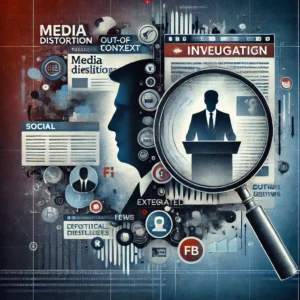
When you make purchases through our links we may earn a small commission.

Photo Credit: TheSmokingChair.com
Put It On Your Wall: CanvasOnDemand.com
Support thesmokingchair.com through Patreon.
Fascism, a term rooted in 20th-century European history, refers to a complex and authoritarian political ideology that has left an indelible mark on the world. Characterized by dictatorial power, extreme nationalism, and a disregard for individual liberties, fascism can manifest in various forms across different cultures and times. Understanding and identifying fascist behavior is crucial for safeguarding democratic principles and promoting a society that values diversity and individual rights.
Defining Fascism
Fascism typically involves the concentration of power in the hands of a single leader, a strong emphasis on national identity, and a disdain for democratic institutions. Identifying fascist behavior requires a nuanced understanding of historical context and recognizing certain patterns and tendencies. Here are 10 tips or strategies to help discern potential signs of fascist behavior:
1. Authoritarianism
Fascist movements often exhibit strong authoritarian tendencies, advocating for a centralized and dictatorial government. Look for leaders or groups that concentrate power and limit individual freedoms.
2. Nationalism
Extreme nationalism is a hallmark of fascism. Be wary of rhetoric that promotes the superiority of a particular race or nation, fostering an “us versus them” mentality.
3. Anti-democratic tendencies
Fascist ideologies may reject democratic principles, viewing them as weak or inefficient. Watch for signs of undermining democratic institutions and processes.
4. Militarism
Fascism tends to glorify military strength and may advocate for an expansionist foreign policy. Keep an eye out for signs of excessive militarization and the promotion of aggressive nationalism.
5. Suppression of dissent
Fascist regimes often suppress dissent and opposition. Identify movements that attempt to silence critics, control media, or undermine free speech.
6. Scapegoating
Fascist ideologies frequently scapegoat certain groups for societal problems. Be cautious of movements that blame specific ethnic, religious, or social groups for a nation’s challenges.
7. Cult of personality
Fascist leaders often cultivate a cult of personality, portraying themselves as strong and charismatic figures. Watch for excessive adulation of a single leader.
8. Corporate and state collaboration
Fascist regimes may form close ties between the state and corporate interests, leading to a merging of government and business. Look for signs of crony capitalism.
9. Rigid social hierarchy
Fascism tends to support a rigid social order with clearly defined hierarchies. Be cautious of movements that emphasize the superiority of certain social or ethnic groups.
10. Use of propaganda
Fascist movements often employ propaganda to shape public opinion and create a specific narrative. Be mindful of information manipulation and efforts to control public perception.
Final Thoughts
Identifying fascist behavior requires vigilance, critical thinking, and an understanding of the historical context in which these ideologies emerge. By recognizing these 10 tips or strategies, individuals can be better equipped to assess political movements and ideologies, fostering a society that values democracy, tolerance, and individual freedoms. In a world where the echoes of fascist ideologies persist, it is crucial to remain vigilant and actively safeguard the principles that uphold a just and inclusive society.
You’ll get more articles like this – and our favorite promotional offers delivered straight to your inbox.
By submitting this form you agree to our terms and conditions. You can unsubscribe at any time.

Video: Mira Shape Knitted TRANSPARENT Try-On. YES or NO?


🔥 Transparent Sheer Tops Try-On Haul | Camila Elle 🔥

To ‘Drill, Baby, Drill’ Big Oil Is Saying ‘No, Thanks’

The D Files: Haley’s Role Model

The Short-Term Appeal and Long-Term Risks of MAGA Policies


🔥 Transparent Sheer Tops Try-On Haul | Camila Elle 🔥

Video: Mira Shape Knitted TRANSPARENT Try-On. YES or NO?

Video: Mira Shape Knitted TRANSPARENT Try-On. YES or NO?

To ‘Drill, Baby, Drill’ Big Oil Is Saying ‘No, Thanks’




















